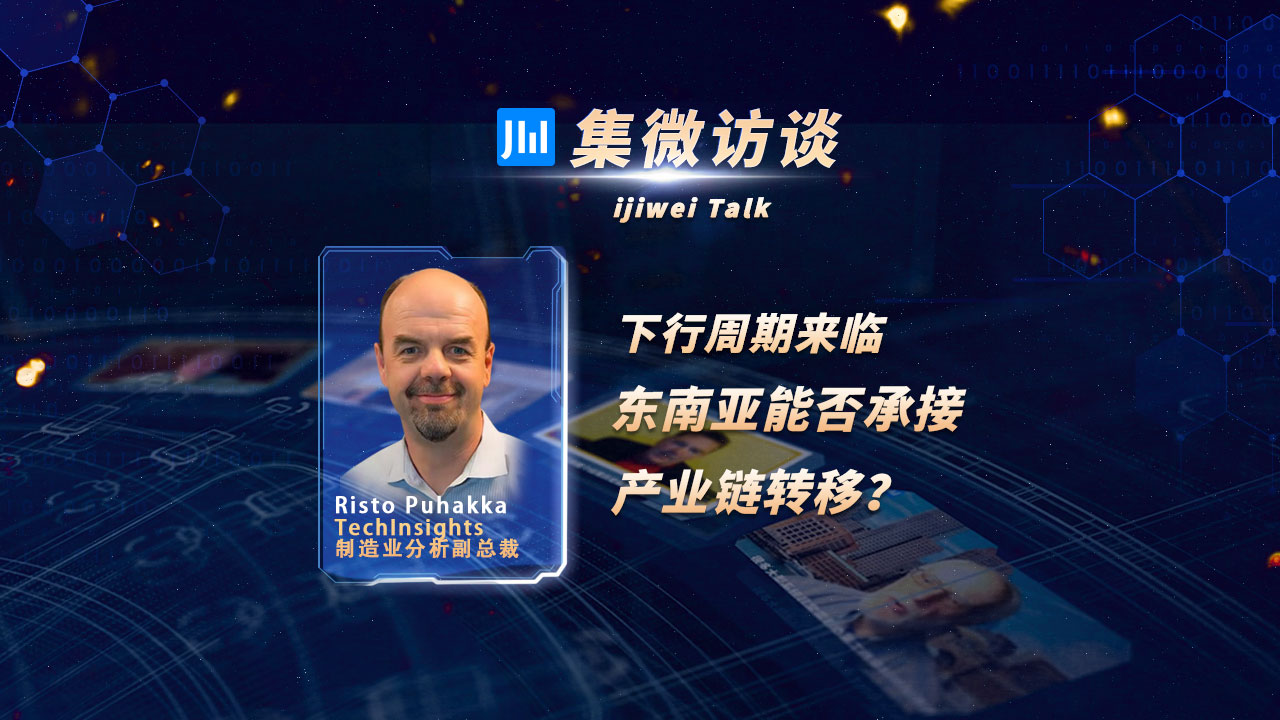
Risto Puhakka, vice president at the U.S.based TechInsights Manufacturing Analysis, said that China’s pandemic shutdown has diversified the local semiconductor supply chains into Southeast Asia in a recent video interview with JW Insights.
Risto Puhakka is an expert insemiconductor capital equipment markets as well as semiconductor manufacturing. He advises on semiconductor market trends and strategic industry statistics.
Following is an excerpt from the interview transcript.

Q: The new U.S. CHIPS Act stated specifically that fund receivers are limited to expand certain business in countries like China. Is it forcing the companies to choose between Chinese and U.S. markets?
A: Let me put this way. First, I think the Act is that if you're accepting funding from the government, it’s you're investing in United States, period. The investment could be in other countries, Europe, Southeast Asia. It's just that the investment and capacity will be built in United States. So that's basically the first condition of that. Broadly it's to increase the US competitiveness in the semiconductor manufacturing across the globe. It's really on-shoring regardless of the country.
Companies like Intel, Global Foundries, Texas Instruments, Micron, have specific investment plans. Some of them are larger, some of them smaller in United States. Basically, what that means is that those investment plans, those capacity announcements will start to materialize. Intel will continue to build in Arizona. It is very likely that they will very crowned in Ohio fabs. Texas Instruments is investing already in Texas. So those investments continue. I don't think it's going to change their plans to be more aggressive. It just makes sure that those investments truly will take place in United States compared to some other areas.
Q: More manufacturers are transferring their supply chain to Southeast Asia due to geopolitical and pandemic pressures. How do you think of this change?
A: If it's a specific for semiconductor equipment, it's very bright. There is a significant know-how in Southeast Asia. And here I'm referring is particularly Singapore and Malaysia. A lot of companies have made significant investments in both or either one of those countries in terms of their manufacturing capabilities, their critical supply chain partners are definitely following into those countries making similar investments. A couple of factors, Southeast Asia is considered neutral. So there is no significant geopolitical issues. And then they already had a significant expertise, and they continue to expand that expertise into semiconductor capital equipment.
And then I have to say the shutdown in China had a significant impact on numbers of supply chains, including semiconductor capital equipment. Those shutdowns are a natural business reaction. As I mentioned, it is to diversify the supply chain into multiple locations, multiple countries, and to some degree build those redundancies that the companies can operate at any kind of environment. So there is the business reasons, there is the economic reasons, and then there is the significant know-how that's been built in Southeast Asia over two decades already. So it's not new there. It's just that expanding rapidly now.
Q: The India government is also providing billions of dollars of incentives for semiconductor development, do you think that’s attractive to foundries like TSMC and Intel?
A: In my view, there is still substantial infrastructure challenges with the power, with the water, with basic infrastructure issues to really reasonably considered large. Let's say in case of TSMC, we're talking about $20 billion investment, not minor investments. So from just basic society perspective, build reliable infrastructure would be critical first step. And then once that's done, we can discuss the semiconductor manufacturing capabilities. And again, we would see China playing a bigger role, but probably not as aggressively as they hoped.
Right now, there is a substantial amount of capacity built around the world in United States, in China, in Korea, in Europe, in Japan. So it would be fairly natural to expect some sort of a pause in the capacity build in the next couple years, which is a classical industry cycle and we already see the early signs of it. It would not surprise to have a one or two year pause on the capacity build.
RELATED
-
Apple’s Chinese supplier Luxshare Precision gives up $330 million investment in India
11-20 17:28 -
European Commission President von der Leyen will visit China in wake of the EU’s ongoing probe into China’s subsidies on EV industries
11-20 16:59 -
Local governments in China come up with policies to support AI development in 2023
11-17 19:12
READ MOST

No Data Yet~







